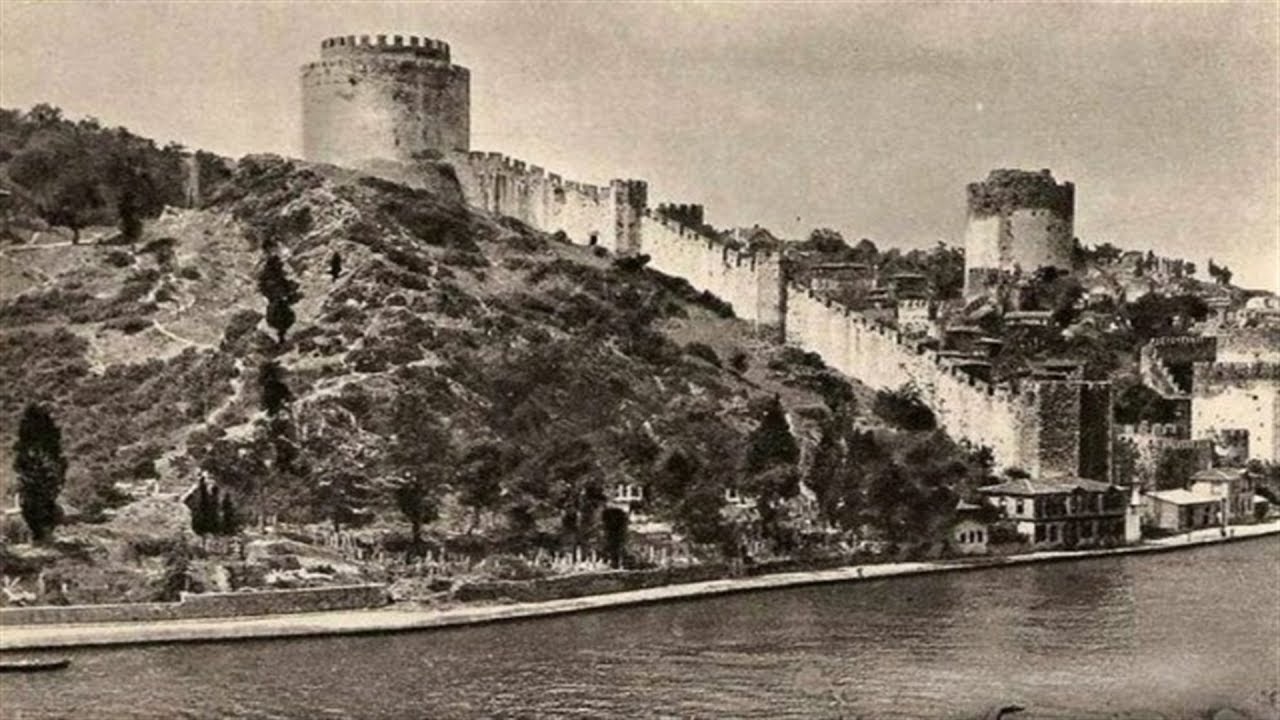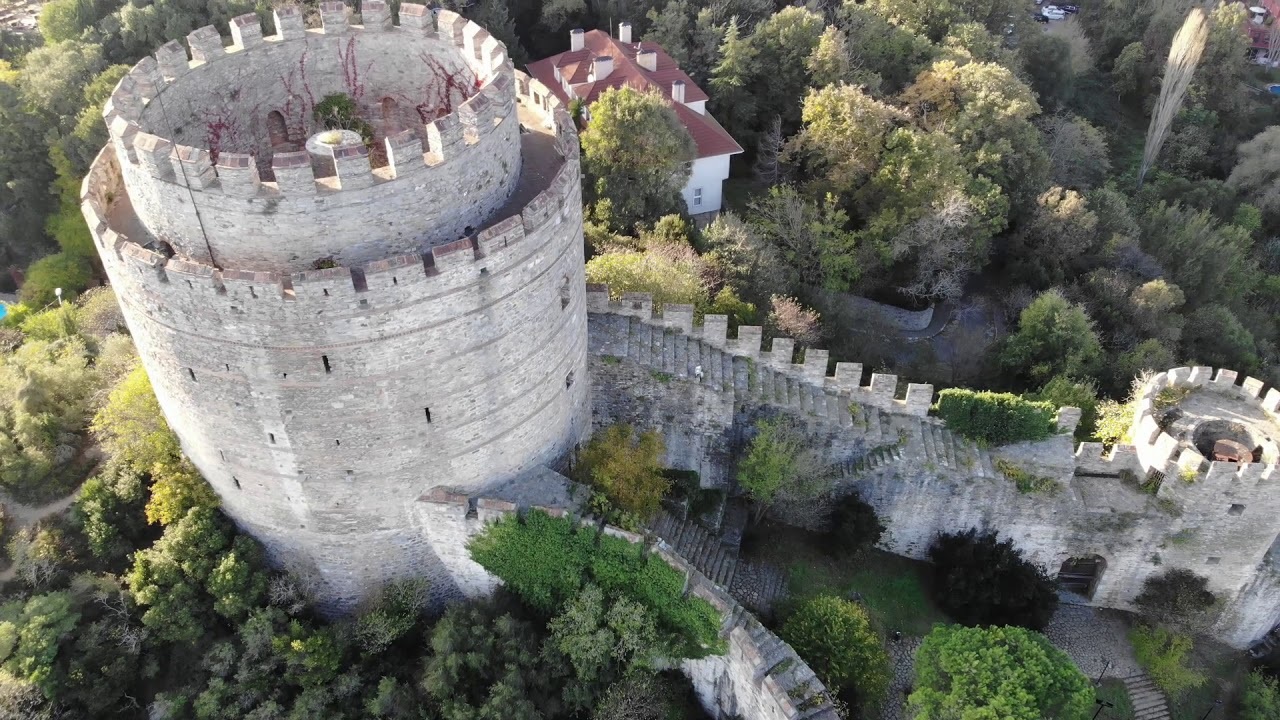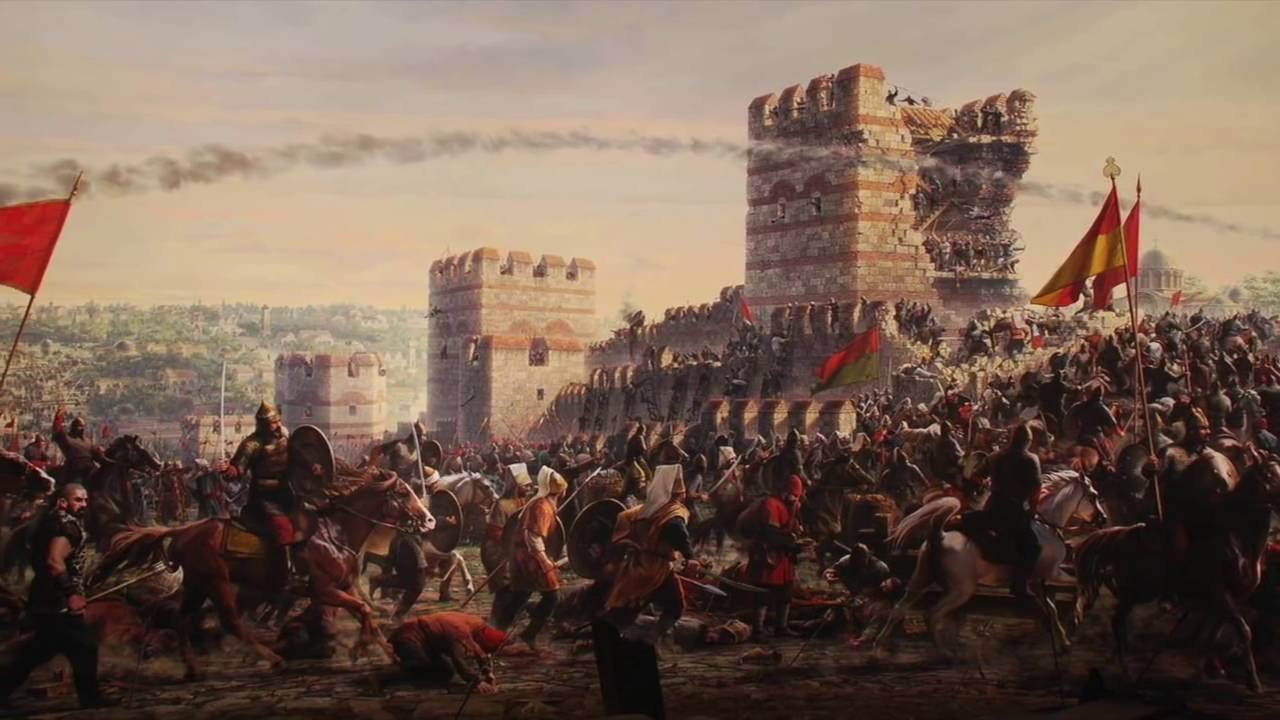Standing opposite each other at the narrowest point of the Bosphorus, Anadolu Hisarı and Rumeli Hisarı are the most visited points of the city today. Especially Rumeli Fortress is extremely important because it is considered an admirable military and architectural achievement according to the conditions of the period. Let’s take a closer look at the history of Rumeli Fortress and the role it played during the conquest of Istanbul.
If you ask anyone about places to visit in Istanbul today, one of the places they will definitely count will be Rumeli Fortress. This magnificent building, which was built hundreds of years ago and renovated many times, is one of the most popular places to visit in Istanbul today. Rumeli Fortress is not just a beautiful structure; It is also one of the most successful works of Ottoman architecture, military thought and history.
Rumeli Fortress, located right across Anadolu Hisarı, was built at the narrowest point of the Bosphorus. Because the main purpose is not to make a stylish work, but to stop the ships that will come to help Byzantine during the conquest of Istanbul. As we all know, he did this job well and played a big role in the conquest of Istanbul. Bride The history of Rumeli Fortress and the role it played during the conquest of Istanbul Let’s take a closer look.
Firstly; Rumeli Fortress was built during which sultan period and by whom?
Rumeli Fortress; The seventh sultan of the Ottoman Empire, after conquering Istanbul Known as Fatih Sultan Mehmet, II. It was built by Mehmed. Considered an example of the military genius of Mehmet the Conqueror, Rumeli Fortress was built so successfully in a short time that it is considered an outstanding example of Ottoman architecture of the period.
It was planned just before the conquest: When was the Rumeli Fortress built?
According to legend, II. Mehmed’s mind was always to conquer Istanbul. With this thought, the sultan returned from the Karaman campaign in 1451. went directly to Istanbul and began to examine his throat. Before an expedition to be made, he saw that Anadolu Hisarı was insufficient for the real control of the Bosphorus.
Believing that the ships that would come to help Byzantine from the Black Sea especially during the expedition should be stopped, II. Mehmet, creating a castle plan himself He ordered construction to begin in March 1452. The castle, whose foundation is thought to have been laid on April 15, 1452, was built in a few months and was completed in August.
So why was the Rumeli Fortress built, what is its purpose?
Rumeli Fortress, which is called Kulle-i Cedide in Fatih foundation charters, Yenice Hisar in the history of publication, Boğazkesen Hisarı in different historiography; II. It is considered a product of Mehmed’s military genius. Because it was built directly opposite the Anadolu Hisarı, at the narrowest point of the Bosphorus, where it narrows to 600 meters.
You know, there is a classic historical sentence, it is said that the entrance of ships to the Golden Horn was prevented by stretching the chain; here is one end of the chain It is in Anadolu Hisarı, and the other end is in Rumeli Hisarı. When the ships coming to the aid of Byzantium from the Black Sea during the conquest were seen, this chain was stretched and they were prevented from entering the Bosphorus, thus helping Byzantium.
Of course, Rumeli Hisarı was not only used as a support point to which the chain end was attached. According to the weapon technologies of the period Some of the cannons poured in a superior manner were deployed on this castle. Thus, the stopped ships were prevented from helping Byzantium even from afar.

Let’s take a look at the architectural features of Rumeli Hisarı:
It is estimated that more than 6 thousand masters, workers and architects worked in the construction of the Rumeli Fortress. It was built on an area of 60 thousand square meters. The length of the walls from north to south is 250 meters and from east to west is 125 meters. It has 4 main doors as well as secret doors for ammo and supplies. Rumeli Fortress, which has 13 bastions, has some walls reaching 7 meters thick.
The historic building has been restored many times over the years:
Rumeli Fortress, which was completed in 1452, suffered the greatest losses. In the earthquake of 1509 and the great fire of Istanbul in 1746 he saw. The building, which was repaired in both periods and regained its former grandeur, was built in III. It went through a comprehensive restoration during the Selim period. One of the most comprehensive restoration works of Rumeli Fortress, whose certain parts have been restored from time to time, was carried out in 1953.

There are some legends about the construction of Rumeli Fortress:
Since the Rumeli Fortress was not Ottoman territory at the time the Rumeli Fortress was built, permission must be obtained from the Byzantine Emperor Constantine. II. Mehmed sent an envoy. asks permission to build a hunting lodge here. The emperor allows, but says it should be as much as the area covered by a calfskin. II. Mehmed cuts a calfskin thinly and connects it together and creates a shape that will cover this huge area.
According to another legend, Constantine states that this is the territory of the Galatians and states that permission should be obtained from them. II. Mehmet, Intimidating the Galatians He builds the fortress without waiting for their permission. According to another rumor, when you look at the first state of the Rumeli Fortress from above, you will see that it wrote Muhammad in Arabic letters. Of course, we can say that these have no historical reality.
Let’s come to the role of Rumeli Hisarı during the conquest of Istanbul:
After that, they say history, it really is. II, who is still a young sultan. According to many, Mehmed tried to do something from his neck. Organized an expedition to Istanbul and Istanbul, a fortress, was besieged. Sieges are difficult campaigns because if the castle is not surrounded correctly, thanks to the help received, the people inside the castle can stay there for years.
II. This is where Mehmed’s military genius comes into play. As we all know, by that time designed unprecedented balls and had them poured into skilled hands. Istanbul was conquered as the first step of a series of events that changed the history of the world when huge cannons crumbled the castle walls, which were thought to be indestructible.
Destroying castles during a siege is an achievement, but preventing the castle from receiving help is an even greater achievement. This great success came true thanks to Rumeli Hisarı. The Christian world sent aid to Byzantium, albeit late. However, these aids were blocked by the cannons in Rumeli Fortress and the chain drawn to the Golden Horn.
What if you ask what if Rumeli Hisarı didn’t exist? yes, maybe Istanbul would be conquered again, but Byzantium would get help. Receiving help, Byzantium could resist and gain strength for much longer. Byzantium, whose resistance and fighting power increased, would have been conquered in a much longer time and could have caused much greater damage to the Turkish army.

The status of Rumeli Fortress today:
Rumeli Hisarı, located in the Sarıyer district of Istanbul today, is one of the most popular destinations for local and foreign tourists. Some of the balls and chains used during the conquest are exhibited here. Many restaurants are also located here. Activities in the region are restricted from time to time due to the damage of the visitors to the historical texture.
played a major role in the conquest of Istanbul. By talking about what you need to know about the history of Rumeli Hisarı. We talked about the importance of this building and its current status. Do you think the Rumeli Fortress is properly protected? You can share your thoughts on the subject in the comments.
